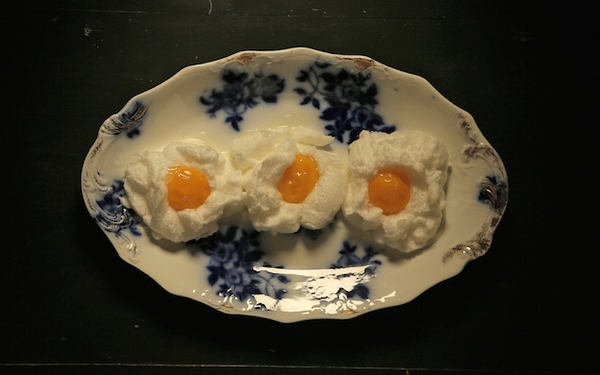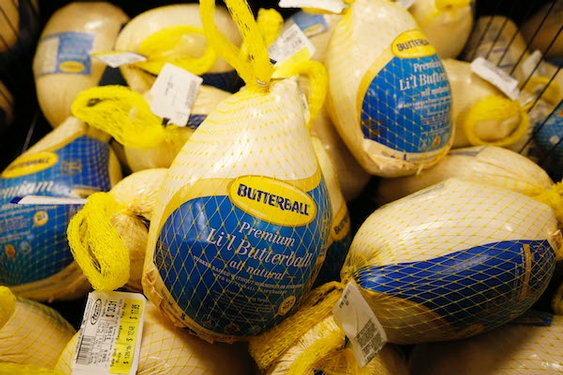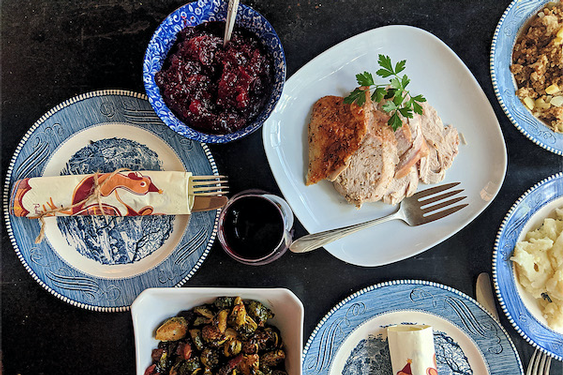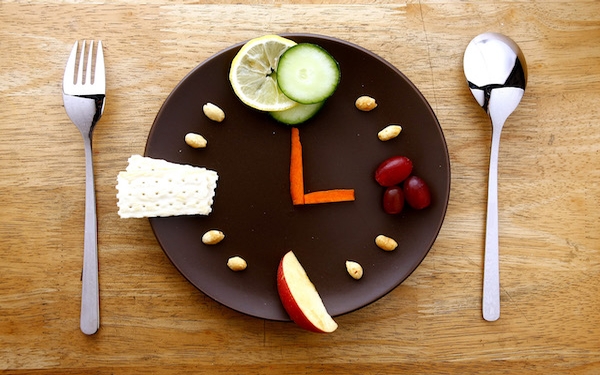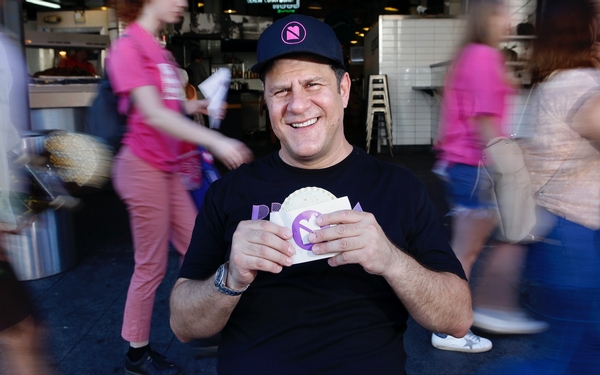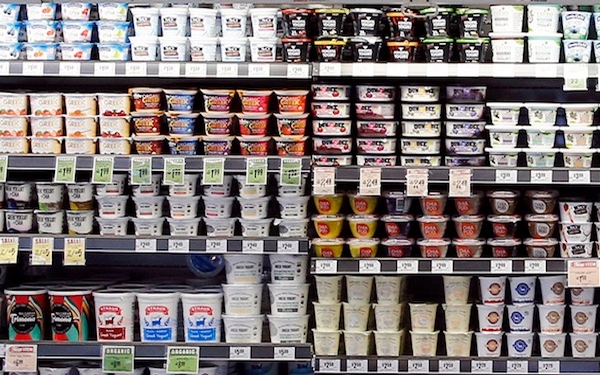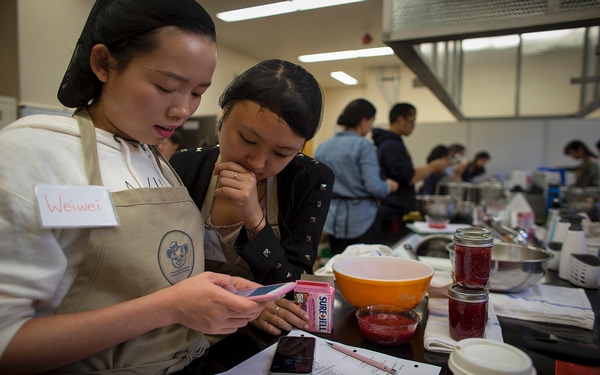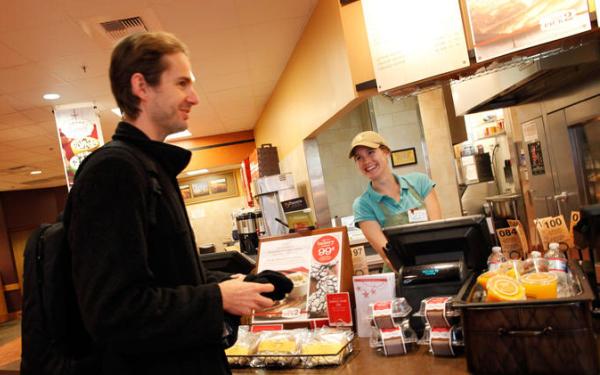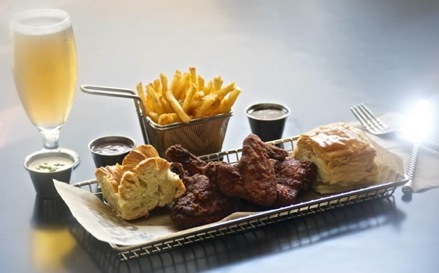Imagine the exciting world of 1900.
Dresses were more daring, and by 1910 hemlines would rise almost all the way to the ankle. William McKinley was re-elected president, though he would not be destined to serve long. The Wright Brothers conquered the air in 1903. The world of art was undergoing a massive revolution.
It was an exciting time for food, too. In the first decade of the new century, brownies were invented, Necco wafers came into being and the first patent was issued for instant coffee. Peanut butter and jelly sandwiches and hot fudge sundaes were created then, too.
But food was different at the turn of the last century, and so was our approach to it. One main concern of cookbook writers at the time was that the food be digestible.
“Persons of weak digestive organs cannot afford to eat” veal or pork, Mrs. S.T. Rorer wrote in the indispensable “Saint Louis’ 1904 World’s Fair Souvenir Cook Book.” She goes on to opine that “veal roasted is far more unwholesome than when cooked in any other way.”
Presumably more wholesome recipes listed in the book include haggis (“chop the uncooked heart, tongue, and half of the liver of a sheep, and mix them with one-half their weight in chopped bacon…”), baked beef heart, stewed kidneys, several ways to eat sheep’s tongue and three preparations of veal sweetbreads.
Personally, I love sweetbreads and tongue. But that’s an awful lot of offal.
When I set out to culinarily re-create the first decade of the 20th century, I didn’t want to make foods that were too unusual, such as potted fish — I had to eat it after all — or too familiar, such as hamburger (the 1901 version was less than 1/2-inch thick, bunless and served with celery leaves and lemon slices on top).
And I didn’t want to make the first version of shrimp cocktail, which was just shrimp and ketchup, seasoned with salt, pepper and cayenne powder.
So I went to some old cookbooks, and this is what I learned: The English language and the format for recipes have changed more in the last 100-plus years than you might think.
A recipe for cheese straws calls for the straws to be placed through rings “like a bundle of faggots” — perfectly correct at the time to mean sticks that have been tied together, but difficult to get past an editor today.
Other recipes tended to be inexact in their directions. One says a cake “is delicious when properly baked,” without specifying at what temperature and for how long.
That particular recipe for a Lady Baltimore Cake dating to 1906 gave me the most trouble of the dishes I made. The instructions for the boiled frosting say to mix sugar and water and “boil until stringly, about five minutes usually does it.”
I didn’t know what “stringly” meant, so I looked it up and learned that it means “stoutly.” I boiled the sugar and water for five minutes, and I guessed it was kind of stout or something, so I mixed in the required egg whites that had been beaten to stiff peaks.
It didn’t work. It didn’t work at all. So I abandoned the world of 1906 for the world of 2016 and looked up a Martha Stewart recipe for Lady Baltimore Cake on my phone. She says to heat the sugar water until it reaches the soft-ball stage, or 235 degrees. That worked fine, though it took a lot longer than five minutes to get there.
The result was a pure-tasting cake heightened by a wonderful filling made from that boiled frosting mixed with nuts and chopped dried fruit.
One dish I made was so good and modern tasting that the people who tested it wondered why it had ever gone out of fashion. Stuffed Eggs, which were featured in a cookbook from 1902, are basically deviled eggs that are stuck back together, rolled in bread crumbs and then deep fried.
They would not be out of place at any state fair, and would make a terrific party dish.
When I found a recipe for Eggs in a Nest in a 1903 cookbook, I was first intrigued by the way they would look. You separate an egg, whip up the whites to a meringue, place the yolk on top and then bake it (actually, the recipe calls for steaming it, but I discovered that leads to a rapidly deflated meringue).
They looked just as good as I’d hoped they would, but I hadn’t counted on the taste. The whipped egg whites turn out to be ethereally light and airy in texture while retaining that great egg-white flavor. Meanwhile, once pierced the yolk spreads throughout the gossamer whites in a deliciously delightful way.
I next made the cheese straws from a 1904 cookbook. I was drawn to them because I love the cheese straws of today, crispy and puffy. But it turns out that time has greatly improved the cheese straws of 1904, which were limp and uninspiring.
Not bad. Just uninspiring.
So I ended with divinity, the nougat-like, melt-in-your-mouth dessert that is apparently still made more regularly today than I ever guessed. Gelled confections have been around for centuries — Turkish Delight is probably the best known — but divinity is believed to have been invented after Karo corn syrup was introduced in 1902.
In fact, I used a recipe from Karo, but not dating back nearly that far. This one involves using an electric mixer, which makes it much easier than it must have been to create it in the first years of the 20th century.
If you have a sweet tooth, it’s more than just good. It’s divine.
———
EGGS IN A NEST
Yield: 1 serving
2 eggs
Butter or nonstick spray
1 tablespoon bread crumbs
1. Preheat oven to 350 degrees.
2. Separate egg whites from yolks; beat whites until stiff peaks form. Butter (or use nonstick spray to grease) a small, fancy dish or two in which eggs are to be served. Sprinkle fine bread crumbs on the bottom.
3. Place beaten egg whites in dish, make a hollow in the middle and slip in the yolks. Bake until whites are firm, about 3 to 4 minutes.
Per serving: 175 calories; 10 g fat; 3 g saturated fat; 373 mg cholesterol; 14 g protein; 5 g carbohydrate; 1 g sugar; no fiber; 192 mg sodium; 66 mg calcium.
Adapted from “The Settlement Cook Book,” 1903
STUFFED EGGS
Yield: 6 servings
7 eggs, divided
2 teaspoons butter ( 2/3 of a tablespoon), cut into small pieces
1 teaspoon cream
2 to 3 drops onion juice, see note
1/2 cup bread crumbs
Vegetable oil, for frying
Note: To get onion juice, grate an onion or place in a food processor. Use the juice, not the solids.
1. Hard boil 6 of the eggs. Peel them, slice in half and remove yolks. Place the yolks in a bowl and mash fine. Add butter, cream, onion juice and salt and pepper to taste and mash well together until the butter is thoroughly (or nearly thoroughly) incorporated. Fill the eggs with the mixture — you will get the best texture if you use your impeccably clean hands — and put them back together.
2. Beat the remaining egg well and add to the filling mixture that is left over. Cover the eggs with this mixture and roll in the breadcrumbs.
3. Pour enough vegetable oil (not olive) to cover the eggs in a saucepan — you can use less oil if you use a smaller pot and fry the eggs in batches. Heat the oil to about 375 degrees. Carefully drop in the eggs and fry until golden brown, about 30 to 45 seconds. Remove and drain on paper towels. Serve whole or separate them again at the seams.
Per serving: 174 calories; 12g fat; 4g saturated fat; 222mg cholesterol; 9g protein; 7g carbohydrate; 1g sugar; no fiber; 150mg sodium; 47mg calcium.
Adapted from “Mother’s Cook Book: Containing Recipes for Every Day of the Week,” 1902
DIVINITY
Yield: About 32 pieces
2 1/2 cups granulated sugar
1/2 cup light corn syrup
1/2 cup water
1/4 teaspoon salt
2 egg whites, room temperature
1 teaspoon vanilla extract
1 cup chopped nuts
1. In a 2-quart saucepan combine sugar, corn syrup, water and salt. Stirring constantly, bring to boil over medium heat. Reduce heat to low and, without stirring, simmer (small to medium bubbles breaking across the surface of liquid) until temperature on a candy thermometer reaches 260 degrees or a small amount of the mixture dropped into very cold water forms a hard ball that doesn’t flatten when pressed, about 40 minutes to 1 hour.
2. In large bowl with mixer at high speed, beat egg whites until stiff peaks form. Beating at high speed, gradually add the 260-degree syrup in a thin, steady stream. Very important: Do not scrape down the sides of the saucepan. Continue beating at high speed until mixture begins to lose its gloss, about 3 minutes.
3. Reduce speed to low. Beat in vanilla. Continue beating at low speed until mixture holds a peak and does not spread when dropped from a spoon, about 4 to 8 minutes. (If mixture becomes too stiff for mixer, beat with a wooden spoon). Immediately stir in nuts.
4. Working quickly, drop mixture by teaspoonfuls onto waxed paper. Alternatively, spread in an 8- or 9-inch square pan lined with plastic wrap, cool on a wire rack and cut into squares.
5. Store in a tightly covered container.
Per serving: 101 calories; 2 g fat; no saturated fat; no cholesterol; 1 g protein; 20 g carbohydrate; 20 g sugar; no fiber; 25 mg sodium; 4 mg calcium.
Recipe by Karo Syrup
LADY BALTIMORE CAKE
Yield: 16 servings
15 tablespoons butter, softened, plus more for greasing pans
8 egg whites, divided (do not allow even a drop of yolk to mix in with the whites)
3 1/2 cups granulated sugar, divided
3 cups all-purpose flour
2 teaspoons baking powder
1 cup milk
1 cup finely chopped raisins or other dried fruit
1 cup finely chopped nuts
1. Butter the inside of 2 cake pans. Set aside. Preheat oven to 375 degrees.
2. Beat or whisk the whites of 6 of the eggs until stiff peaks form. Set aside. In a large bowl, use an electric mixer to beat butter until it is light and fluffy. Add 1 1/2 cups of the sugar and continue to beat until it is completely incorporated.
3. Sift together the flour and baking powder. Add about 1/3 of this mixture to the creamed butter and mix until incorporated. Add about 1/2 of the milk and mix until incorporated. Add another 1/3 of the flour, mix, the remaining milk, mix, and finally the remaining flour. Mix until incorporated. Gently fold in the whipped egg whites until thoroughly incorporated. Pour evenly into the prepared pans and bake until a toothpick inserted into the center comes out clean, about 15 to 20 minutes. Cool in the pans on a wire rack.
4. To make the frosting, place the remaining 2 cups of sugar in a small saucepan with 1 1/2 cups of water. Boil until it reaches 235 to 240 degrees on a candy thermometer or until a small amount of the liquid dropped into very cold water forms a ball that is soft.
5. When the sugar water reaches the desired temperature (or just before), whisk or beat the 2 remaining egg whites until stiff peaks form. Pour the boiling sugar slowly into it, mixing well. Remove about 1/3 of this mixture to a bowl and stir in raisins and nuts.
6. Remove the cakes from the pans and use a serrated knife to make their tops flat. Place one on a cake plate or serving platter and spread the filling mixture with the fruit and nuts evenly across the top. Place the other cake on top and spread the frosting evenly over the entire cake.
Per serving: 450 calories; 16 g fat; 8 g saturated fat; 30 mg cholesterol; 6 g protein; 72 g carbohydrate; 52 g sugar; 2 g fiber; 108 mg sodium; 47 mg calcium.
Adapted from the Daily Gazette and Bulletin, Williamsport, Pa., 1906
———
©2016 St. Louis Post-Dispatch
Visit the St. Louis Post-Dispatch at www.stltoday.com
Distributed by Tribune Content Agency, LLC.


